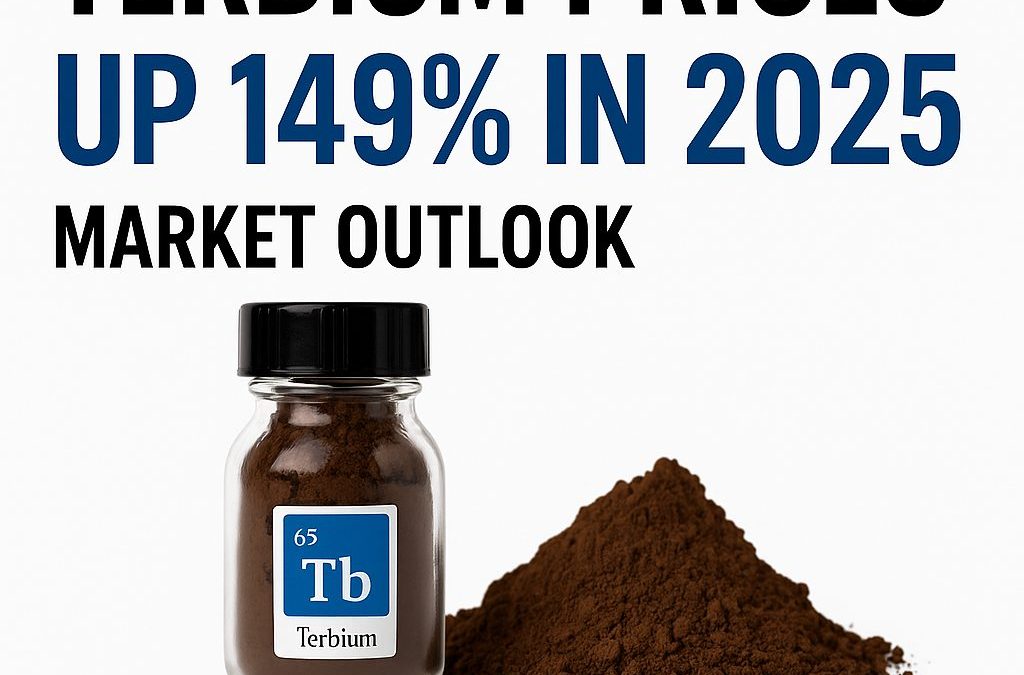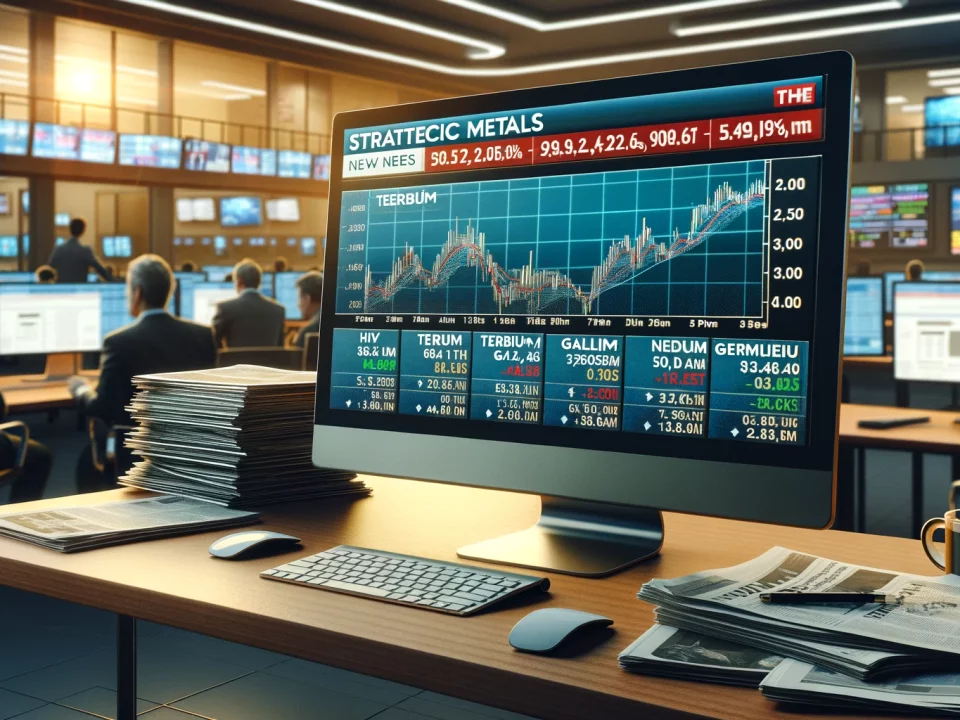
Weekly News Review October 17 – November 23 2025
November 23, 2025
Weekly News Review November 24 – November 30 2025
November 30, 2025In a year where several strategic metals saw meaningful movement, terbium stole the show.
From $1,396.50/kg in January to an internal resale level of $3,484.50/kg by late November, the metal surged roughly 149% YTD, one of the strongest performances in the entire rare-earth complex.

The rally was powerful enough to temporarily pause terbium sales to private investors, prioritising industrial demand during one of the tightest supply periods seen in years.
But this isn’t just a story about a price spike.
It’s a window into what happens when a strategically essential material meets chronic structural shortages, and why terbium’s long-term outlook remains one of the most compelling in the sector.
Why Terbium Tightened So Dramatically in 2025
Three developments converged this year:
1. China’s on–off export policy sent shockwaves through heavy rare earth markets.
The October tightening of outbound controls followed by a sudden “temporary suspension” only heightened uncertainty. Markets hate ambiguity, but in commodities as scarce as terbium, ambiguity raises the floor.
2. Heavy rare earth supply from Myanmar remains erratic.
The Kachin and Wa State mining corridors experienced repeated disruptions, cutting off a large portion of global concentrate supply.
3. Magnet manufacturers increased their reliance on terbium-rich high-temperature grades.
EV motors, defense systems, robotics, and high-performance servo motors all depend on terbium for stability at elevated temperatures. Even small increases in magnet-production capacity put major pressure on a market this small.
In short: the fundamentals tightened, and terbium reacted exactly as a micro-sized critical material does … explosively.
Short-Term: What the Spike Really Tells Us
The pause in new terbium sales is telling. It indicates a market operating far closer to physical shortage than to surplus.
Even if prices cool in the coming weeks, entirely normal after a vertical move, the underlying drivers haven’t changed:
- China still dominates heavy rare earth refining
- Western separation capacity remains years away
- Defense procurement is increasing
- EV and robotics applications continue expanding
The short-term volatility is just noise. The structural imbalance is the signal.
The Medium-Term Outlook (2026–2027)
The next 12–24 months will be shaped by several forces:
1. US, EU, and Japanese procurement acceleration
All three regions have moved strategic materials up the priority ladder, with terbium, dysprosium, and neodymium at the top of the list.
2. Continued instability in Myanmar
Even modest disruptions ripple through the entire heavy rare earth supply chain.
3. Limited new refining capacity outside China
Mining rare-earth ores is comparatively easy; refining heavy rare earths is the real bottleneck, and China retains roughly 85%+ of global chemical separation capacity.
4. Strategic stockpiling
Defense agencies and magnet manufacturers may choose to accumulate inventory earlier than usual to avoid future shocks.
Together, these factors support a Bullish with Volatility outlook: higher average pricing, but with sharp swings driven by policy and availability.
The Long Game: 3–5 Years Out
Looking further ahead, terbium remains one of the rarest and most irreplaceable ingredients in high-performance magnets. The Fraunhofer Institute, the USGS, and multiple government agencies project structural deficits in heavy rare earths through the early 2030s.
Three macro forces dominate the longer-term picture:
• AI & autonomous systems — requiring ultra-stable actuators and sensors
• EVs & robotics — expanding magnet demand across multiple industries
• Defense modernisation — from targeting systems to next-gen UAVs
• Offshore wind & industrial motors — continued scaling of high-performance drives
This is why terbium is consistently categorised as a critical or strategic raw material across nearly every Western government list.
Long-term bias: Strongly bullish
Reason: chronic under-supply + expanding use cases + no scalable substitutes.
Why Physical Terbium Still Fits the SMI Thesis
Even though new purchases are temporarily paused, terbium continues to embody the pillars of the SMI approach:
- Ultra-scarce heavy rare earth with constrained extraction and even tighter refining capacity
- Irreplaceable role in high-temperature performance magnets
- Strategic material for the US, EU, Japan, and NATO
- Strong liquidity for industrial buyers during tight markets
- Outperforms in periods of policy volatility
- Long-term demand rising faster than supply
Terbium didn’t just have a strong year; it delivered a real-world demonstration of why physical rare earths belong in a forward-looking portfolio.






